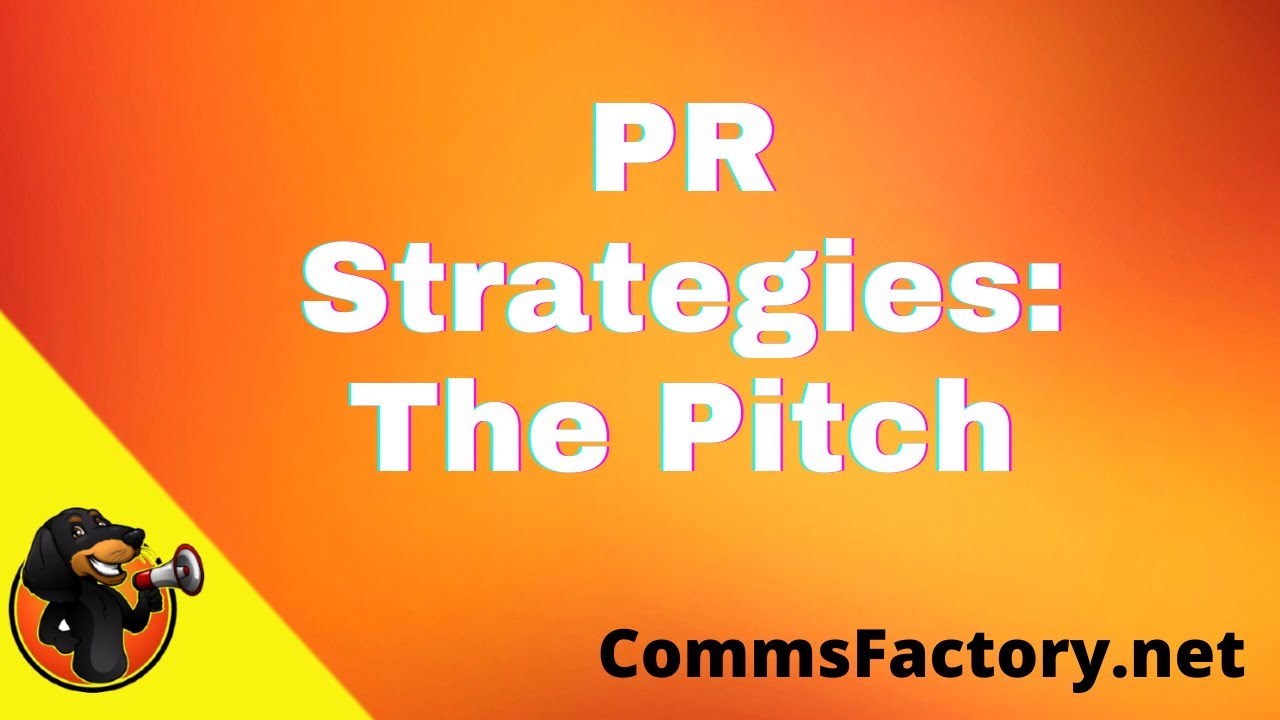Public Relations Strategies - Building A Strong Reputation And Effective Communication
Public relations strategies play a vital role in shaping how organizations communicate, engage, and maintain relationships with their target audiences.
Author:K. N.Sep 07, 2023286 Shares285.7K Views

Public relations strategiesplay a vital role in shaping how organizations communicate, engage, and maintain relationships with their target audiences.
In a rapidly evolving digital age, where information travels swiftly and perceptions are formed instantaneously, effective PR strategies have become essential for businesses, institutions, and individuals to establish a positive reputation, manage crises, and foster meaningful connections.
This guide delves into the world of public relations strategies, exploring their significance, key components, and best practices to navigate the intricate landscape of modern communication.
What Is Public Relations?
The technique of using various forms of media to promote your company and build a favorable public opinion is referred to as public relations, or PR for short.
In addition, public relations (PR) is the process of managing the brand and communications of your firm, particularly during times of crisis.
PR is a sort of brand management that helps companies control the dissemination of their information; hence, it is analogous to branding.
The primary distinction rests in the fact that public relations places an emphasis on communication and reputation, whereas branding is predicated on graphical components such as logos, websites, and other promotional materials.
What Are Public Relations Strategies?
Public relations strategies assists a company in developing, organizing, and measuring the efficacy of its public relations techniques over time. It is distinct from a marketing plan, yet it should aid in marketing activities.
A company's public relation strategy is the overarching plan it employs to go from where it is now to where it wants to be in terms of, for example, brand awareness, customer base size, and public perception.
Using these strategies, a business may better plan its public relations activities to attract its desired demographic and achieve its objectives. They are comparable to marketing tactics in that they aim to increase public recognition of a particular brand.
Organizations can employ public relations methods in crisis management to respond to a negative event and strive to create a positive outcome from it. A company's reputation might benefit from a well-thought-out plan if it uses it to emerge stronger from a crisis.
To reach a broader audience with their messaging for these initiatives, businesses frequently use channels including the media, blogs, social media, and podcasts.

Public Relations Strategies: Landing the Pitch
How To Build Public Relations Strategies
Assessing Brand Factors Internally And Externally
Think on the successes and failures of previous company endeavors as a starting point. Those things may include:
- Monitoring coverage in the press
- Analyzing the Impact of Interpersonal Connections and Outcomes
- Analyzing social media traffic and engagement metrics
- Analyze buyer personas and client feedback.
- The next step is to do a market study to learn from the successes of your rivals. This procedure may be sped up with the use of social listening techniques.
- Before wrapping up your investigation, make a note of anything, both internal and external, that might have affected your brand. Some examples of these are:
- Variations in price, features, or both
- Variations in Distribution
- Alterations in Stakeholders and Top Management
- Employee Opinions and the Law
- Situation in politics
- Variations in the Economy
- Trends
- New technologies
Outline Your Goals
While it's easy to seize on strategies that pop out during your investigation, setting clear objectives is essential. This is an essential stage whether you're dealing with a problem on a local level or plotting your public relations strategy for the coming year.
A brief description of objectives will help you and your team make effective decisions.
Every public relations strategy should incorporate the following elements. The first step in every successful marketing is identifying your intended demographic. The next step is to settle on the major ideas you wish to convey to that group.
Lastly, be sure to mention the metrics you intend to monitor. Analytics tracking needs to be included into campaigns from the start, rather than added later.
Building a solid PR foundation is more important than making isolated efforts. Always aim for a SMART outcome.
Use this public relations plan sample to make sure your approach addresses your most important messages and other objectives.
Make A Schedule For Your Public Relations Campaigns
Having the appropriate message out at the right moment is crucial for public relations. Make sure your short-term and long-term goals are clearly marked on the calendar you produce.
Don't forget to factor in holidays and other significant dates in your sector. For online retailers, the last week of November is a very busy period.
Choose Effective Strategies For Public Relations
Knowing the when and the why will help you zero in on the ideal strategies to implement. This detailed inventory describes effective public relations methods. Some examples of public relations campaigns may also prove useful.
Monitor Your Progress
After settling on a strategy, determine how success will be gauged. Since public relations is not a precise science, gauging public opinion is difficult.
If at all feasible, PR measurements should mirror organizational goals. The link between PR and return on investment may then be more easily established.
Importance Of Public Relations Strategies
Public relations (PR) or "earned media" is a more organic and trustworthy method of promoting businesses and increasing website traffic, audience engagement, and community connections than paid advertising. Increasing brand recognition and recruiting new consumers require the strategic use of media sources.
Furthermore, a well-developed PR plan facilitates the dissemination of corporate objectives and initiatives to the appropriate audiences. The strategy guides [often multichannel] attempts to disseminate the central message, which helps to make the most of resources and raises visibility.
Brands that are successful in regularly expressing their objectives and wins are more likely to be regarded in a favorable light even while facing a setback, which impacts branding and marketing efforts and an organization's perspective during a crisis.
Best Public Relations Strategies
- Leveraging Media Relations -Building and nurturing relationships with journalists and media outlets can lead to positive media coverage and increased visibility for your organization. A well-executed media relations strategy involves crafting compelling press releases, pitching newsworthy stories, and engaging with media professionals.
- Effective Crisis Management -Developing a comprehensive crisis communication plan is essential to address unexpected challenges swiftly and effectively. Being prepared to handle crises, from product recalls to negative publicity, can help mitigate damage to your brand's reputation.
- Engaging Content Creation -Producing high-quality and relevant content, such as blog posts, articles, videos, and infographics, can position your organization as a thought leader in your industry. Sharing valuable insights and expertise helps build credibility and fosters a positive image.
- Community Engagement -Engaging with your local community or target audience through sponsorships, partnerships, events, and charitable initiatives can strengthen your organization's ties and create a positive reputation.
- Social Media Management -An active and strategic social media presence allows you to connect directly with your audience, share updates, and respond to feedback. Tailoring your content to different platforms and engaging in meaningful conversations can enhance your brand's online reputation.
- Influencer Collaborations -Partnering with influencers or industry experts can help amplify your message and reach a broader audience. Influencers can provide authentic endorsements and create buzz around your products or services.
- Employee Advocacy Programs -Engaging employees as brand advocates can have a significant impact on your public relations efforts. Encouraging employees to share positive experiences and stories about your organization can humanize your brand and build trust.
- Thought Leadership Campaigns -Establishing your organization's leaders as experts in their field through speaking engagements, guest articles, and interviews can enhance your brand's credibility and visibility.
- Stakeholder Engagement -Building and maintaining positive relationships with stakeholders, including customers, investors, employees, and regulatory bodies, is essential for a strong reputation. Regular communication and transparency can help manage expectations and foster trust.
- Measuring and Analytics -Monitoring and analyzing the effectiveness of your public relations strategies is crucial to refining your approach. Tracking key performance indicators (KPIs) such as media coverage, website traffic, social media engagement, and sentiment can guide your efforts and ensure continuous improvement.
How To Create A Public Relation Strategy
Storytelling creates PR strategies. Tell your audience about yourself, what you do, and why they should care. Your business's "why" should underpin every tale. What's your purpose? Why bother? After evaluating your "why," setting your final objective is very vital.
Set A Goal
Sales-driven firms with quarterly and annual revenue targets should avoid starting a PR plan without a clear purpose. The best technique to assess performance determines whether these goals are quantitative or qualitative. Goals should be explicit, quantifiable, and include a deadline for review.
Confirm Audiences
Audiences spend time differently. Consider Brand A, a prominent college town coffee store. Brand A targets college-aged men and women who spend most of their leisure time on their phones, so they utilize BuzzFeed for PR. PR experts can better target media sources and distribute engaging newsby confirming the audience.
Tell A Compelling Story
Communicators can better tell the brand's narrative after defining the audience and media venues. The tale should incorporate essential statements that relate to the brand's values and objectives, as well as its reputation or PR strategy.
Consider creating a newsroom that integrates the target audience's important messaging into bite-sized or easy-to-skim stories to capture website visitors and encourage longer visits and repeated page views.
Be Creative
Consumers get their news through social media, blogs, and podcasts. A strong PR plan goes beyond traditional journalism and targets viewers where they acquire their information.
A good PR plan relies on the PR pro (brand voice) and media contact (amplifier) building connections. A solid relationship with a small-market fashion blogger or a New York Times writer may make the difference between reading and deleting an email.
People Also Ask
How Do Public Relations Strategies Contribute To Business Success?
Public relations strategies play a pivotal role in shaping a company's image, building brand credibility, and fostering positive relationships with stakeholders.
By effectively communicating messages, addressing concerns, and maintaining transparency, PR strategies can enhance a business's reputation and ultimately contribute to its overall success.
What Are Some Key Elements Of Successful Public Relations Strategies?
Successful public relations strategies encompass various elements, including strategic messaging, media relations, crisis management, community engagement, and social media management.
These components work in tandem to create a comprehensive approach that aligns with an organization's goals and values.
How Can Social Media Be Leveraged In Public Relations Strategies?
Social media platforms provide a powerful tool for public relations professionals to connect with audiences, share information, and manage public perception.
PR strategies often involve creating engaging content, monitoring conversations, and responding to feedback to maintain a positive online presence.
Why Is Crisis Communication An Essential Aspect Of Public Relations Strategies?
Crisis communication is a crucial component of public relations strategies because it enables organizations to navigate challenging situations while preserving their reputation.
Having a well-defined crisis communication plan allows companies to respond quickly, provide accurate information, and demonstrate transparency in times of adversity.
What Role Does Storytelling Play In Effective Public Relations Strategies?
Storytelling is a central element of effective public relations strategies as it helps organizations convey their values, missions, and impact in a relatable and engaging way.
By crafting compelling narratives, PR professionals can connect with audiences on an emotional level, leading to stronger brand affinity and trust.
Final Thoughts
Public relations strategies stand as the cornerstone of effective communication and relationship-building in today's dynamic and interconnected world.
By adopting well-crafted PR strategies, organizations and individuals can proactively shape their public image, engage with stakeholders, and navigate challenges with finesse.
Whether it's leveraging social media platforms, crafting compelling narratives, or addressing crises promptly, the art of PR strategies empowers entities to amplify their messages, cultivate trust, and foster enduring connections.
As the landscape of communication continues to evolve, the importance of strategic public relations remains unwavering, serving as a guiding beacon for those seeking to establish a strong and positive reputation in the eyes of the public.

K. N.
Author
Latest Articles
Popular Articles